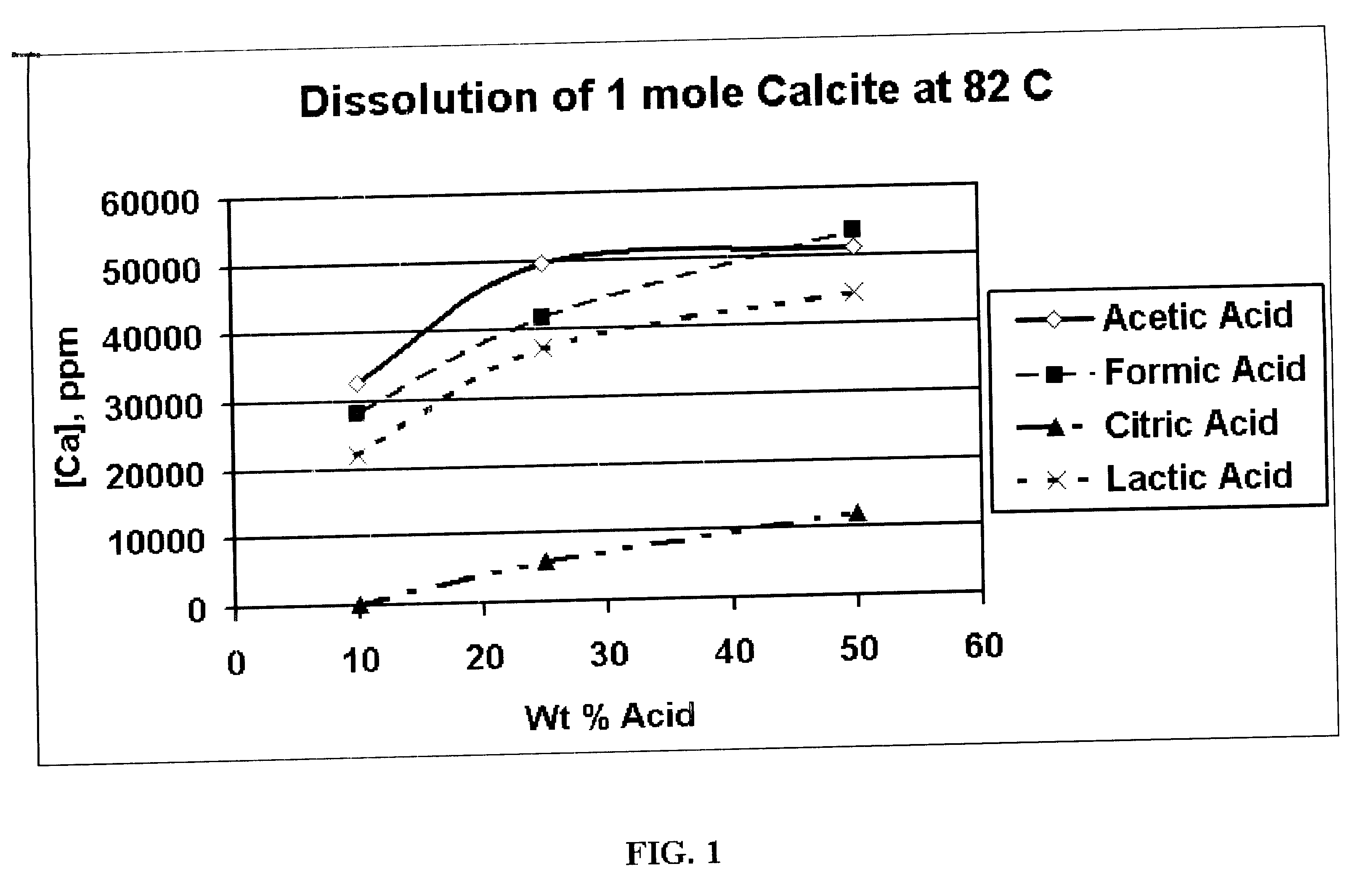Generating Acid Downhole in Acid Fracturing
a technology of acid fracturing and acid fracturing, which is applied in the direction of borehole/well accessories, fluid removal, chemistry apparatus and processes, etc., can solve the problems of acid corrosion creating iron compounds such as iron chlorides, affecting the stability or effectiveness of other components, and acid corrosion corroding such materials, etc., to achieve the effect of enhancing cleanup, reducing damage, and reducing the amount of viscosifier
- Summary
- Abstract
- Description
- Claims
- Application Information
AI Technical Summary
Benefits of technology
Problems solved by technology
Method used
Image
Examples
example 2
[0037] Experiments were performed (Table 1) to evaluate the hydrolysis rate of PLA and to compare the hydrolysis rates of PLA with and without added calcite. The PLA was OLE_LINK3NATUREWORKS.TM.PLA Polylactide Resin 4042DOLE_LINK3, a polymerized mixture of D- and L-lactic acid, available from Cargill Dow, Minnetonka, Minn., USA. The material was used as approximately 4 mm diameter beads. The calcite was reagent grade powder. 45.04 Grams PLA and 20 grams calcite, when used, were added to 500 ml distilled water. The time shown is the time for 100% hydrolysis.
1TABLE 1 Composition 121.degree. C. 135.degree. C. 149.degree. C. PLA Dissolves in greater Dissolves in greater Dissolves in than 2 hours than 2 hours less than 2 hours PLA + Dissolves in greater Dissolves in less than Dissolves in Calcite than 2 hours 30 2 hours 30 minutes less than minutes 45 minutes Calcite Insoluble Insoluble Insoluble
[0038] In another experiment, a sample of a biaxially stretched PLA film (about 0.02 mm thick...
example 3
[0039] Experiments were conducted to demonstrate the efficacy of soluble liquid accelerants. 45.04 Grams NATUREWORKS.TM. PLA Polylactide Resin 4042D was added to 500 ml distilled water. This would be 1 molar lactic acid if fully hydrolyzed. Varying amounts of accelerant, giving concentrations ranging from about 0.1 molar to about 1 molar were added. The mixture was then stirred at 90.degree. C. After X hours, complete hydrolysis was not observed. Sodium hydroxide was found to be approximately as reactive as propylene glycol diacetate; those two were more reactive than potassium hydroxide, which was more reactive than ammonium hydroxide. Once the PLA dissolution was initiated, the rate was not affected by the concentration of added component.
PUM
 Login to View More
Login to View More Abstract
Description
Claims
Application Information
 Login to View More
Login to View More - R&D
- Intellectual Property
- Life Sciences
- Materials
- Tech Scout
- Unparalleled Data Quality
- Higher Quality Content
- 60% Fewer Hallucinations
Browse by: Latest US Patents, China's latest patents, Technical Efficacy Thesaurus, Application Domain, Technology Topic, Popular Technical Reports.
© 2025 PatSnap. All rights reserved.Legal|Privacy policy|Modern Slavery Act Transparency Statement|Sitemap|About US| Contact US: help@patsnap.com

